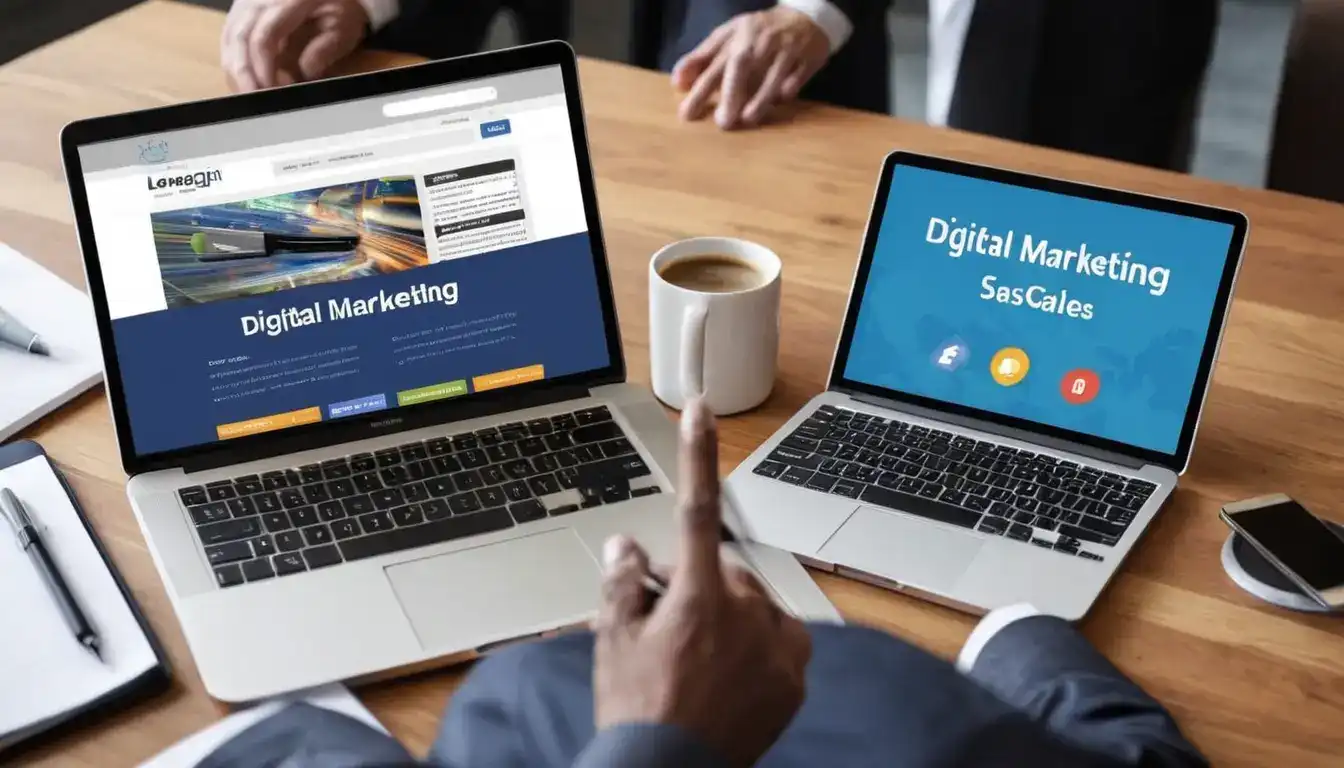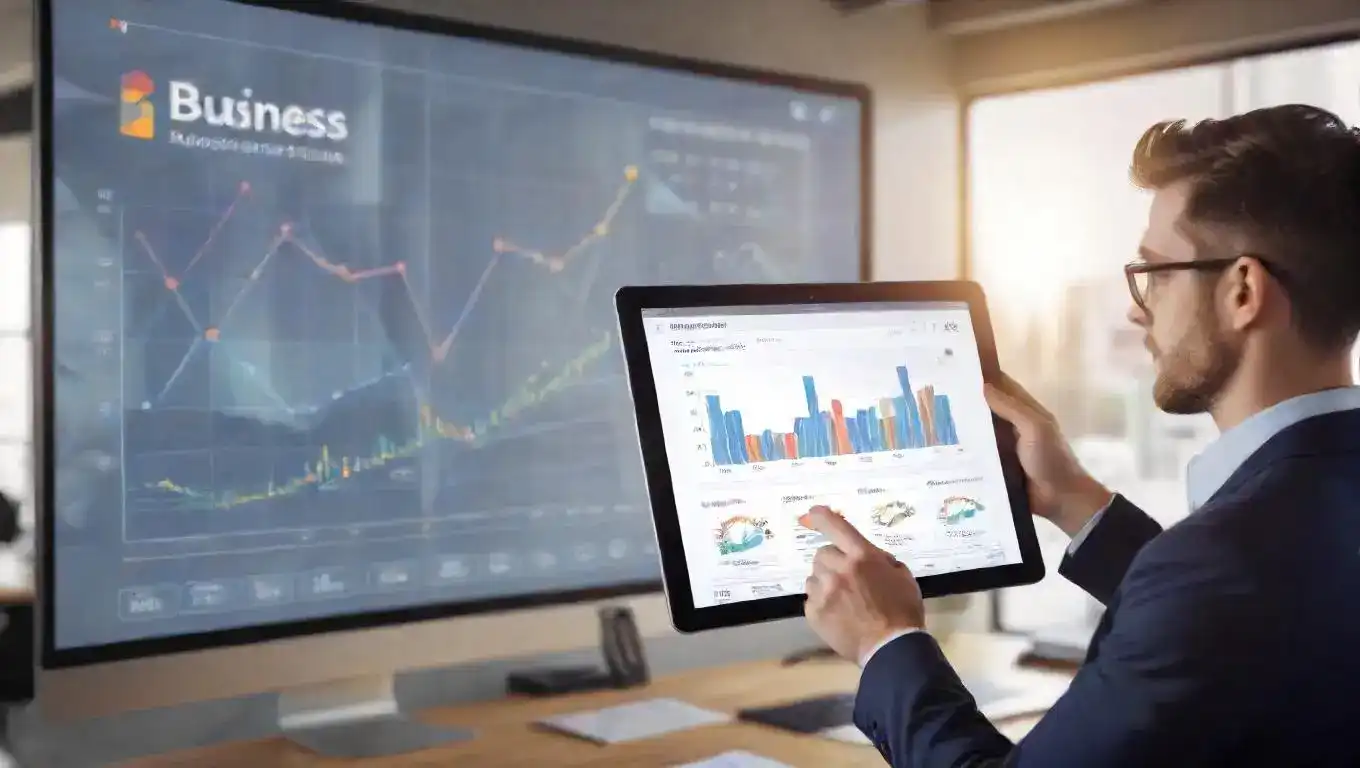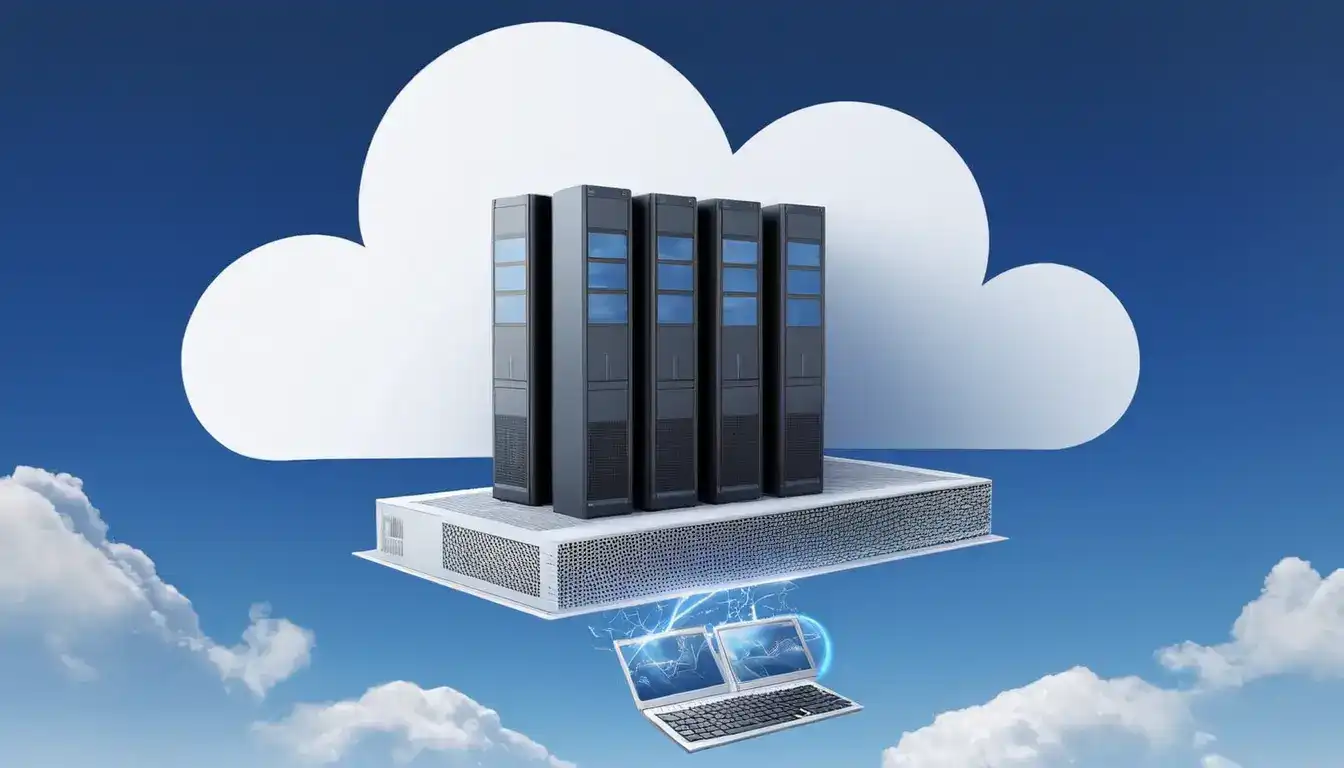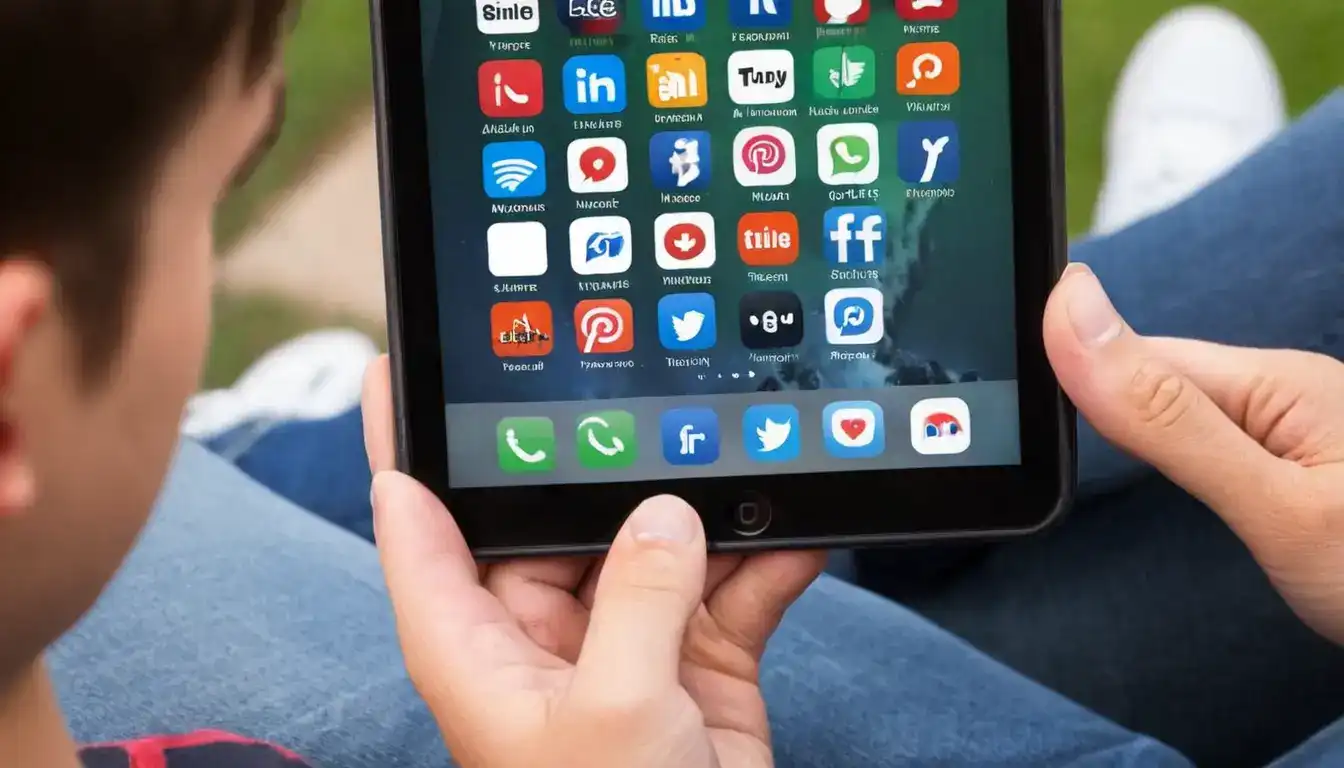Leveraging Digital Marketing to Boost Business Sales
Emily Willis

Photo: Leveraging Digital Marketing to Boost Business Sales
In today's digital age, leveraging digital marketing strategies is essential for businesses looking to boost their sales and stay competitive. Digital marketing encompasses a wide range of tactics and channels that can help businesses reach their target audience, build brand awareness, and drive conversions. This article explores how businesses can effectively use digital marketing to increase sales, without using confusing technical jargon, ensuring it adheres to SEO guidelines and is safe from plagiarism and AI content detectors.
Understanding Digital Marketing
Digital marketing refers to the use of digital channels, platforms, and technologies to promote products and services to a targeted audience. Unlike traditional marketing methods, digital marketing allows businesses to reach a global audience, track campaign performance in real-time, and optimize their strategies based on data and analytics.
Key Digital Marketing Strategies to Boost Sales
1. Search Engine Optimization (SEO)
SEO is crucial for improving your website's visibility in search engine results pages (SERPs). By optimizing your website with relevant keywords, creating high-quality content, and building backlinks, you can attract organic traffic and increase your chances of converting visitors into customers.
Keyword Research: Identify relevant keywords that your target audience is searching for. Use tools like Google Keyword Planner or SEMrush to discover high-volume keywords with low competition.
On-Page Optimization: Optimize your website's meta tags, headings, and content with targeted keywords. Ensure your website is mobile-friendly and has fast loading times to improve user experience.
Content Marketing: Create informative and engaging content, such as blog posts, articles, and videos, that address your audience's pain points and interests. Regularly update your content to keep it relevant and valuable.
2. Pay-Per-Click Advertising (PPC)
PPC advertising allows businesses to bid on keywords and display ads on search engines and other digital platforms. It is a cost-effective way to drive targeted traffic to your website and generate leads or sales quickly.
Google Ads: Set up targeted campaigns on Google Ads to reach potential customers who are actively searching for your products or services. Monitor your campaigns regularly and optimize your ad copy and bidding strategy to improve performance.
Social Media Advertising: Platforms like Facebook, Instagram, LinkedIn, and Twitter offer robust advertising options to target specific demographics, interests, and behaviors. Experiment with different ad formats, such as carousel ads, video ads, and lead generation ads, to maximize engagement and conversions.
3. Social Media Marketing
Social media platforms provide businesses with a powerful tool to connect with their audience, build relationships, and promote their products or services. Effective social media marketing involves creating compelling content, engaging with followers, and leveraging paid advertising options.
Content Strategy: Develop a content calendar with a mix of informative, entertaining, and promotional content. Use visuals, such as images and videos, to grab attention and encourage sharing.
Community Engagement: Respond to comments, messages, and reviews promptly. Encourage user-generated content and testimonials to build social proof and credibility.
Influencer Partnerships: Collaborate with influencers or industry experts who have a strong following and influence over your target audience. Partnering with influencers can help amplify your brand message and reach a wider audience.
4. Email Marketing
Email marketing remains one of the most effective digital marketing tactics for nurturing leads and converting them into customers. Build an email list of subscribers who have opted in to receive communications from your business and send targeted messages based on their preferences and behavior.
Segmentation: Divide your email list into segments based on demographics, purchase history, or engagement level. Tailor your email content to each segment's interests and needs to improve engagement and conversion rates.
Automation: Use email automation tools to send personalized emails at scale, such as welcome emails, abandoned cart reminders, and promotional offers. Monitor email performance metrics, such as open rates and click-through rates, to optimize your campaigns over time.
5. Content Marketing
Content marketing focuses on creating and distributing valuable, relevant, and consistent content to attract and retain a clearly defined audience. It helps build brand authority, educate prospects, and drive conversions over time.
Blog Posts and Articles: Publish informative and SEO-optimized blog posts and articles that address common questions and challenges faced by your target audience. Use storytelling techniques to make your content engaging and shareable.
Ebooks and Guides: Create downloadable resources, such as ebooks, guides, and whitepapers, that provide in-depth information on specific topics related to your industry. Gate these resources behind a lead capture form to generate leads and build your email list.
Video Content: Leverage the power of video marketing to demonstrate products, share customer testimonials, or provide educational content. Publish videos on platforms like YouTube, Facebook, and Instagram to reach a wider audience and drive engagement.
Implementing an Integrated Approach
To maximize the impact of your digital marketing efforts and boost sales, it's essential to adopt an integrated approach. Align your SEO, PPC, social media, email marketing, and content marketing strategies to create a cohesive and consistent brand experience across all channels. Monitor key performance indicators (KPIs), such as website traffic, conversion rates, and return on investment (ROI), to measure the success of your campaigns and make data-driven decisions.
Conclusion
Leveraging digital marketing strategies is essential for businesses looking to boost their sales and achieve sustainable growth in today's competitive landscape. By implementing SEO best practices, running targeted PPC campaigns, engaging with your audience on social media, nurturing leads through email marketing, and creating valuable content, you can attract, convert, and retain customers effectively. Remember, digital marketing is not a one-size-fits-all approach. Continuously monitor and optimize your strategies to adapt to changing market trends and consumer behaviors, ensuring long-term success for your business.
Latest ✨
View AllLuxury cruises offer a heightened travel experience with impeccable service, luxurious accommodations and carefully crafted itineraries. These cruises strike the perfect balance between leisure and exploration, with destinations that include the Mediterranean, Caribbean, Alaska, Norwegian Fjords and South Pacific Islands.
Emily Willis
Cloud computing is essential for modern businesses, offering cost savings, scalability, and improved collaboration. Implementing cloud computing requires careful planning to ensure safety and efficiency. Tips for safe and efficient implementation include conducting a needs assessment, choosing the right cloud service model, prioritizing security, planning for data migration, optimizing costs, training your team, implementing backup and recovery solutions, monitoring performance, planning for scalability, and staying updated with industry trends.
Emily Willis
The stock market is a crucial component of the global economy, providing a platform for capital formation, investment, and wealth creation. Understanding stock market movements, including bull and bear markets, market volatility, and factors influencing stock prices, is essential for investors, businesses, and policymakers. Economic, financial, and behavioral factors all play a role in shaping stock market dynamics.
Emily Willis
productivity in the workplace and provides a comprehensive guide to enhancing productivity. It covers topics such as understanding productivity styles, creating a productive workspace, time management, overcoming distractions, enhancing motivation and energy levels, effective task management, collaborating and delegating tasks, utilizing technology for productivity, and maintaining work-life balance.
Emily Willis
Business
View All
August 5, 2024
Effective Marketing Strategies to Increase Your Business Saleseffective marketing strategies in today's competitive marketplace. It discusses the significance of understanding the target audience, building a strong brand identity, and implementing various marketing tactics to increase sales. Specific strategies such as video marketing, influencer marketing, optimizing customer experience, embracing omnichannel marketing, tracking performance, staying updated on trends, and continuous improvement are highlighted.
Emily Willis

August 4, 2024
How to Build a Strong Brand Identity for Your BusinessBuilding a strong brand identity is essential for business success as it helps differentiate you in the market, connect with your audience, and build loyalty. Key steps include understanding your target audience, defining your mission and values, developing a unique selling proposition, creating a memorable brand name and logo, choosing brand colors and typography, crafting a brand voice and messaging, ensuring a consistent brand experience, leveraging visual content.
Emily Willis

August 5, 2024
Tips for Finding the Right and Profitable Business Ideasteps to finding a profitable business idea, including understanding your passions and skills, solving problems, conducting market research, finding a niche, leveraging your network, brainstorming, testing and validating your idea, staying updated on trends, evaluating market potential, validating your idea with customers, evaluating financial viability, protecting intellectual property, seeking guidance and support, and being prepared to adapt and evolve.
Emily Willis
Economy
View AllThe world of international trade is facing disruption due to rising protectionism, geopolitical tensions, technological advancements, shifting consumer preferences, and the rise of e-commerce. This has led to higher prices for consumers, disrupted supply chains, job losses, and reduced economic growth.
Read MoreCryptocurrencies are digital assets that operate on a decentralized system called blockchain. They offer potential benefits such as faster and cheaper transactions, enhanced security, financial inclusion, transparency, and a hedge against inflation. However, they also come with risks such as volatility, regulatory uncertainty, security concerns, environmental impact, and potential for illicit activities.
Read MoreBest Secured Loans for Debt Consolidation with Low Interest Rates | Compare Top Lenders & Save Money on Monthly Payments
Read MoreEntertainment
View All
August 4, 2024
The Future of Cinema: Trends in Film Production, Distribution, and Audience Engagementthe ever-evolving landscape of cinema, driven by technological advancements, changing audience preferences and innovative storytelling approaches. The exhibition explores trends such as digital filmmaking, virtual production, the dominance of streaming services, hybrid release models, and the revitalization of cinemas.
Emily Willis

August 4, 2024
Profiles of Famous Artists Who Inspire the Younger Generationthe inspirational aspects of famous artists such as Vincent van Gogh, Frida Kahlo, Pablo Picasso, Banksy, Yayoi Kusama, Jean-Michel Basquiat, Georgia O'Keeffe, Andy Warhol, Kehinde Wiley, and Ai Weiwei. It highlights their perseverance, innovation, authenticity, social commentary, mental health advocacy, and representation, among other qualities, and how these aspects continue to inspire young artists to pursue their creative dreams.
Emily Willis

August 5, 2024
Music Universal Language: Connecting and Inspiring Across CulturesMusic has the power to transcend language barriers and connect people on a deep emotional level. It serves as a bridge between cultures, fostering understanding and appreciation for diversity. The universality of rhythm and melody creates a sense of unity, while the diversity of musical styles allows for exploration and creativity.
Emily Willis
Health
View Allsignificance of mental health awareness in today's fast-paced world. It discusses the importance of understanding mental health, breaking down stigma, and promoting positive mental health practices.
Emily Willis
Maintaining good health involves a balanced diet that provides essential nutrients for the body. A balanced diet includes carbohydrates, proteins, fats, vitamins, minerals, fiber, and water. Benefits of a balanced diet include enhanced energy levels, improved mental health, a stronger immune system, better weight management, reduced risk of chronic diseases, and enhanced digestion. Components of a balanced diet include fruits and vegetables, whole grains, protein sources, dairy or dairy alternatives, and healthy fats. Tips for maintaining a balanced diet include planning meals, portion control, staying hydrated, limiting processed foods, eating mindfully, and including physical activity.
Emily Willis
In today's fast-paced world, stress, anxiety, and depression are common mental health challenges that can affect our overall well-being. Understanding these issues and taking steps to manage them is important. Strategies for managing mental health include prioritizing self-care, practicing mindfulness and relaxation techniques, challenging negative thoughts, connecting with others, developing healthy coping mechanisms, managing time effectively, and seeking professional help when needed.
Emily Willis
Trending 🔥
View All
1
2
3
6
7
8
9
10
Sports
View AllAugust 5, 2024
Inclusive Playing Field: Creating a Welcoming and Accessible Sports Environment
Read MoreAugust 4, 2024
The Importance of Mental Training and Psychological Strategies in Helping Athletes Reach Their Peak Performance on the Field
Read MoreAugust 5, 2024
Sportsmanship in the Spotlight: Cultivating Respect, Integrity, and Ethical Behavior
Read MoreTechnology
View All
August 5, 2024
Best AR Translation Apps Tested
Uncover the best AR translation apps on the market through our in-depth testing and reviews. From seamless voice conversations to real-world text translation, these apps will revolutionize the way you communicate across languages.

August 5, 2024
AI Applications that are Changing the World Around Us
Artificial Intelligence (AI) is no longer a concept from science fiction, but a reality that is reshaping the world around us. From virtual assistants to self-driving cars, AI is making significant impacts in various industries such as healthcare, education, transportation, and agriculture. AI is also being used to address environmental challenges and enhance customer experiences.

August 4, 2024
The Metaverse: A Virtual World with Endless Possibilities
metaverse is a rapidly evolving concept that offers a network of interconnected 3D virtual spaces accessed through technologies like VR and AR.

August 5, 2024
How to Choose the Right Cloud Computing Platform for Your Needs
Choosing the right cloud computing platform is essential for business success. Factors to consider include assessing business needs, evaluating cost and pricing models, analyzing performance and reliability, examining security and compliance, considering scalability and flexibility, evaluating support and customer service, assessing integration and compatibility, and reviewing user experience and ease of use.





















